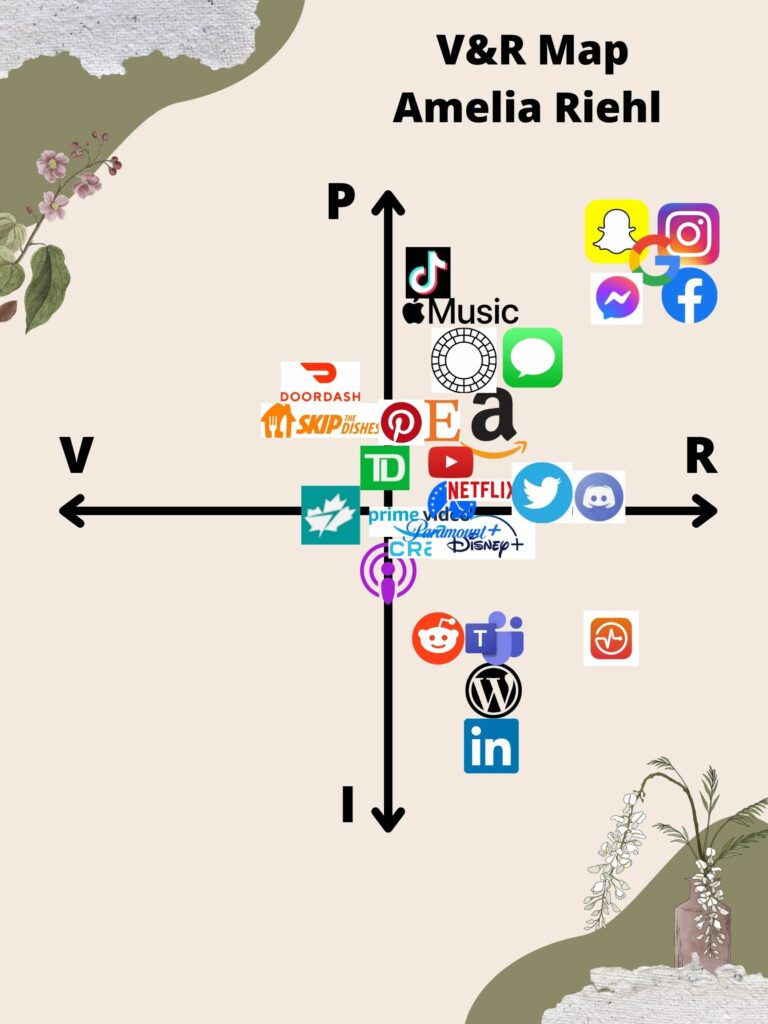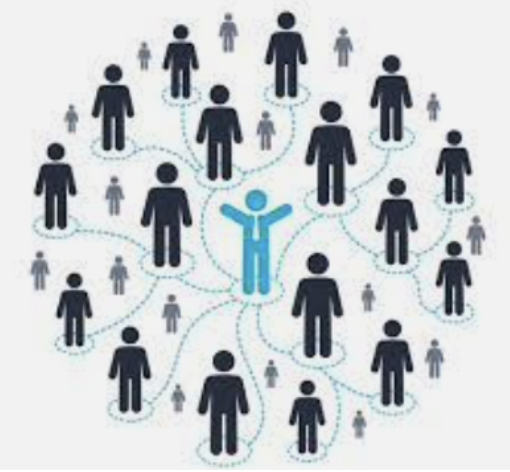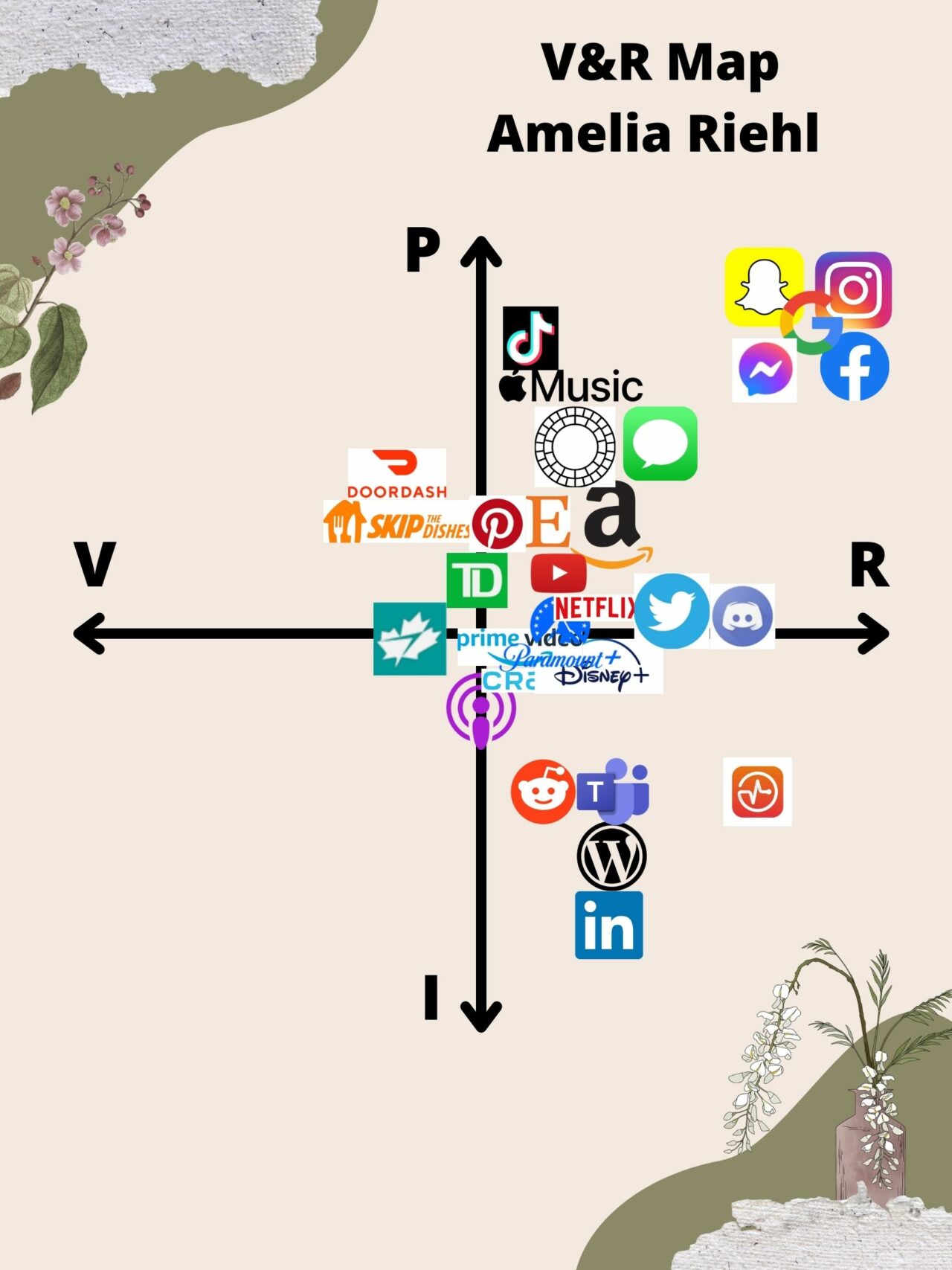Hi there! Today I’m going to share my visitor and resident map (V&R map), and then I would like to have a little discussion about personal learning networks and digital identities!
When I first read” V&R map,” I had that same confused look you probably have on your face as I write this sentence. Essentially a visitor and resident map is an exercise we can all do to help us better understand how we use the internet (OCLC Research).
I went through my devices and selected the top 30 most essential platforms I use. I then classified these 30 platforms into these four categories: V and R, and P and I.
- V and R are on a continuum, and these letters stand for “Visitor” (you do not leave a social trace) and “Resident” (you do leave a social trace) (OCLC Research).
- P and I are also on a continuum, separate of V and R. P and I stand for “Personal” and “Institutional” (work-related) (OCLC Research).

Before diving into digital platforms, personal learning networks, and more, I would like to discuss why I placed some of these platforms where I have put them. After looking at some examples, I thought about what it meant for streaming services, such as Netflix, to be a resident or personal site. I don’t always use Netflix as a personal service; sometimes, while I’m substitute teaching, I will log on and use it for work-related activities, play documentaries and entertaining clips. For this reason, I rated all the streaming services I sometimes use around each other. Further, looking at the platforms I chose to incorporate into my map, all of my school apps, such as bright space, Microsoft Teams, and WordPress, are in the institutional category. I only ever use these platforms when it is for my schoolwork, which I consider work-related.

Thinking about my V and R map and the platforms that I chose to include, an important question is what digital platforms are students using to develop their professional network? To build my professional network, I am using LinkedIn, as most students do. Whenever I take professional development workshops or courses, the instructors always say to get onto LinkedIn as soon as possible. LinkedIn is a great platform to sell yourself and hopefully find a job through some of your connections! Along with LinkedIn, these instructors also tell you to get onto Twitter. Many use Twitter for fun, but Twitter has many other educational and professional uses, some of which can help expand your personal learning network.
Applications and platforms are great for expanding our personal learning networks. It is also important to consider in-person opportunities as a way to grow and boost your personal learning that works. I recognize this is an online course, but in-person interactions are more critical now that we are all coming out of our COVID-19 bubbles. Another great way to expand your personal learning network is through in-person means to attend an educational event, such as a workshop, a conference, or auditing a class, all of which can be done online.

When creating our digital identities and reputations, it is important to consider various factors such as data privacy and security. For example, when creating an Instagram account, we can choose whether that account is private or public. Making an account public means that whoever can see what you are posting whenever they want. Whereas a private account, someone must request to follow you, and that request must be approved by you. Only when that request is approved by you may individuals see your photos and what you post. Clearly, these data privacy and security aspects can both limit and promote our personal learning networks. For example, being private on applications such as Instagram, Facebook, and more, can perhaps limit the number of connections and information you’re able to find and share to expand your personal learning network. On the other hand, being public on these applications can allow for more traffic on your profile, as more people are able to find it and look at it. However, keep in mind when creating personal learning at work how you can create a digital identity and reputation.
Our digital identity is our presence online, such as what we post and share, who we engage with, how we treat people, and how we utilize various digital tools. Our digital identities are always with us, it is our body of work. Because our digital identities are always with us, they could either serve us to be really good or really bad. What I mean by this is that depending on what your digital identity and reputation may look like, it could determine whether you get a job or not. Often times when employers are vetting potential employees, they will search for your digital identity.
I will leave you with this. What does your digital identity and reputation look like? How would an employer respond if you applied for a job at their company and they assessed your social media presence via your digital identity? What would they find? Would the potential employers like what they see? Could you possibly miss out on a job opportunity simply because of your social media presence, digital identity, and reputation?
I hope you enjoyed the read 🙂
Amelia

Leave a Reply